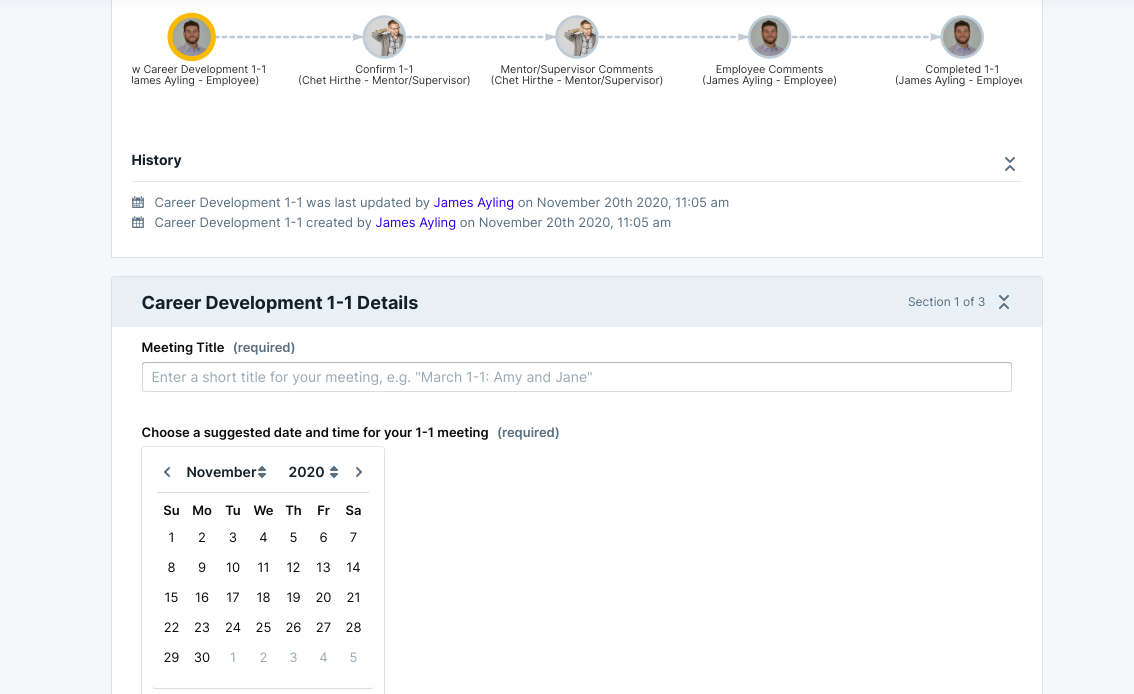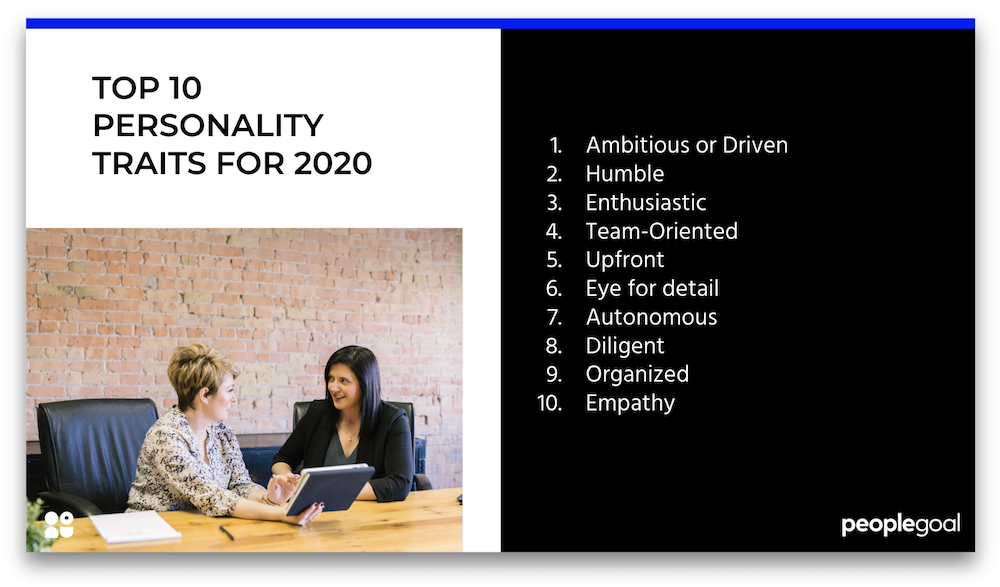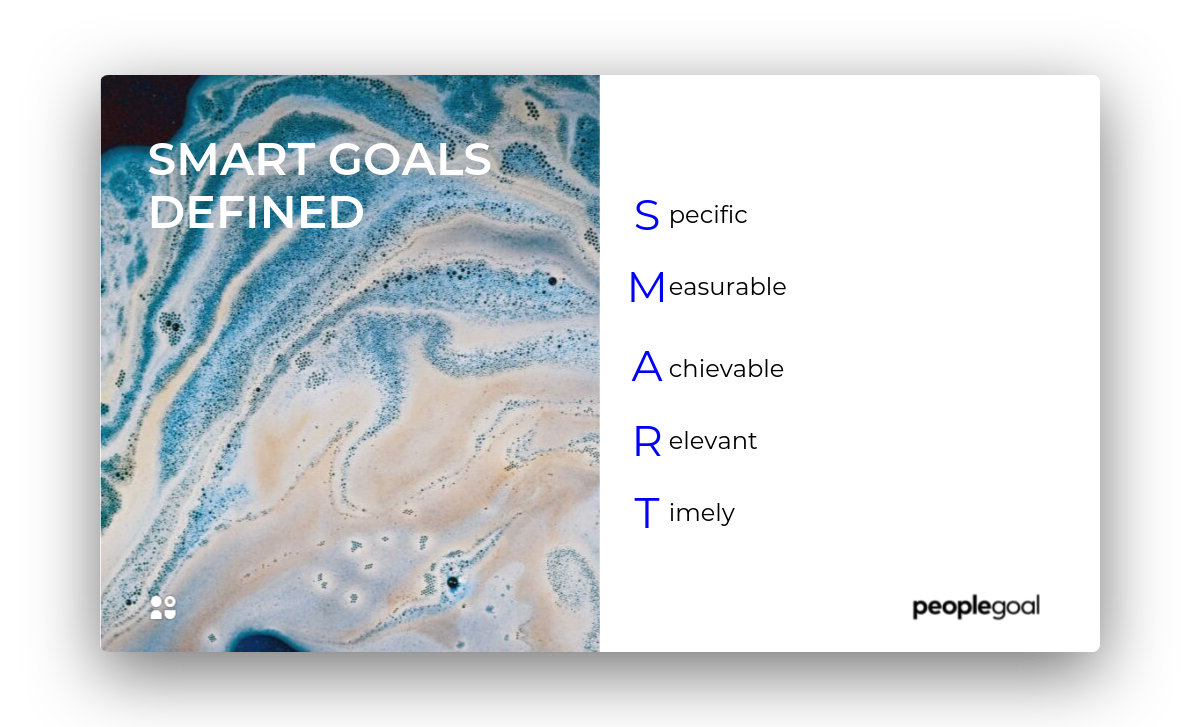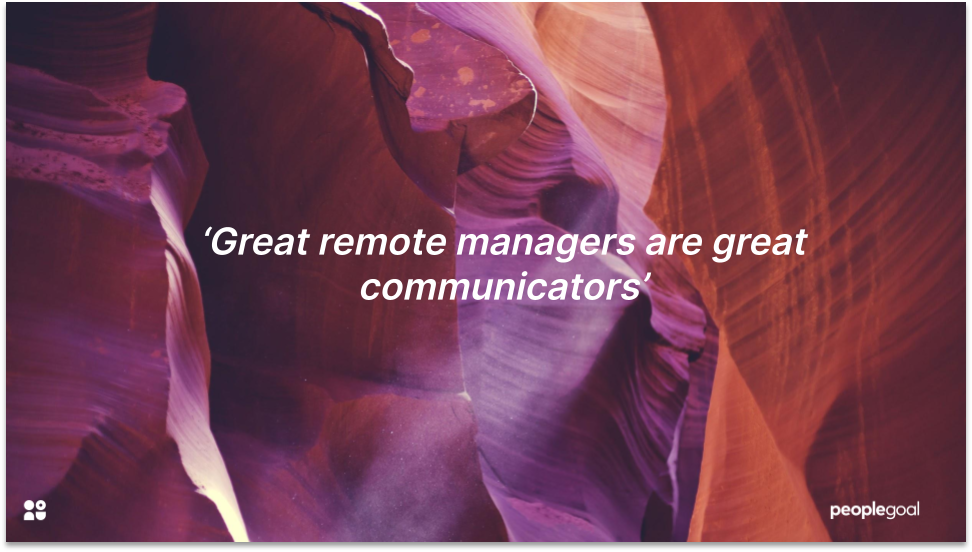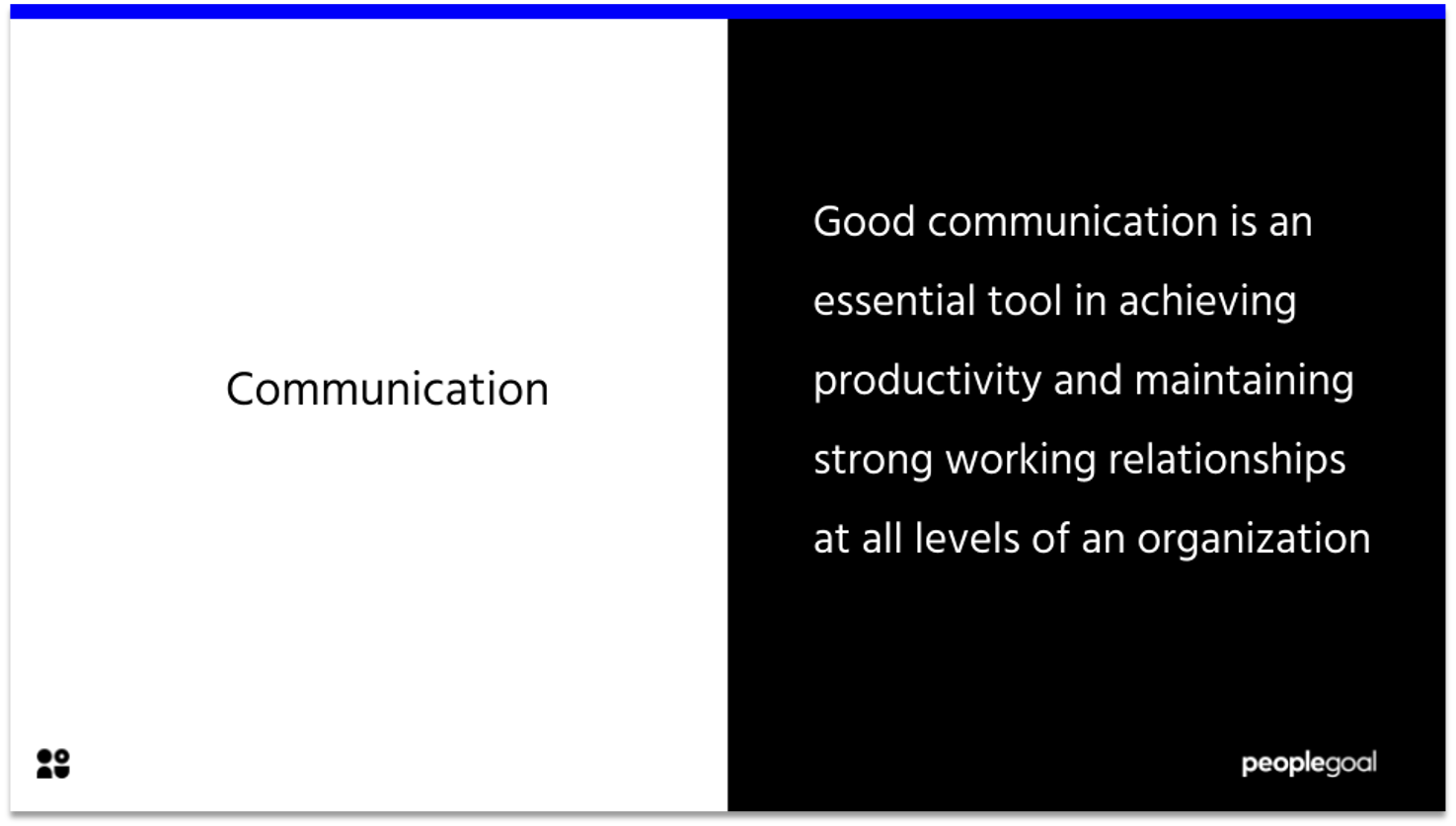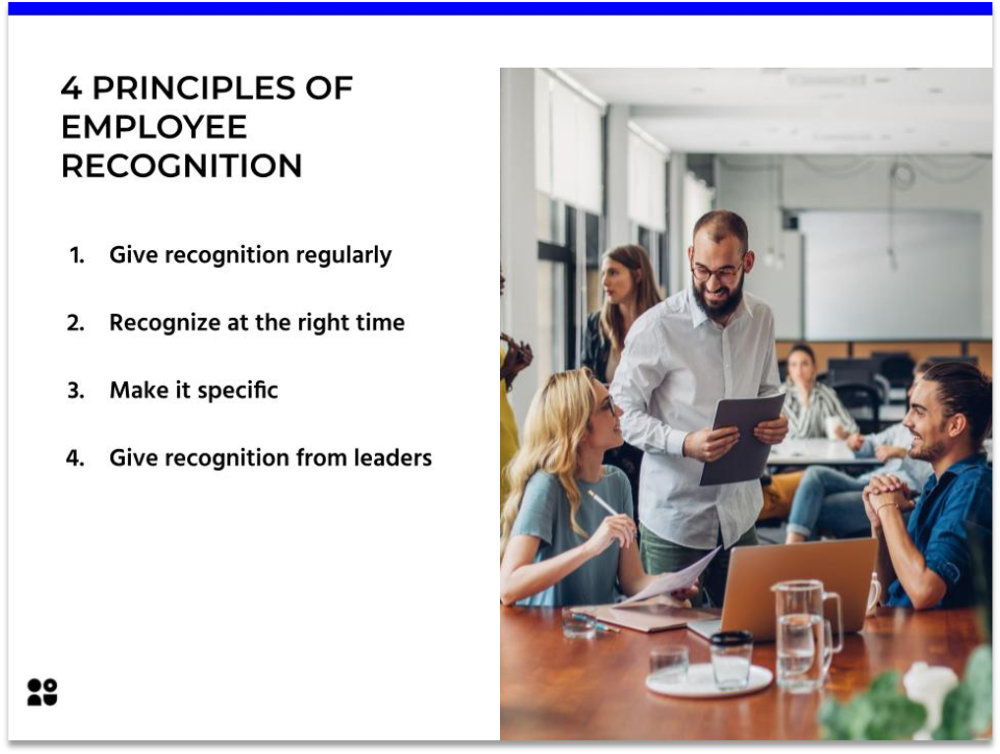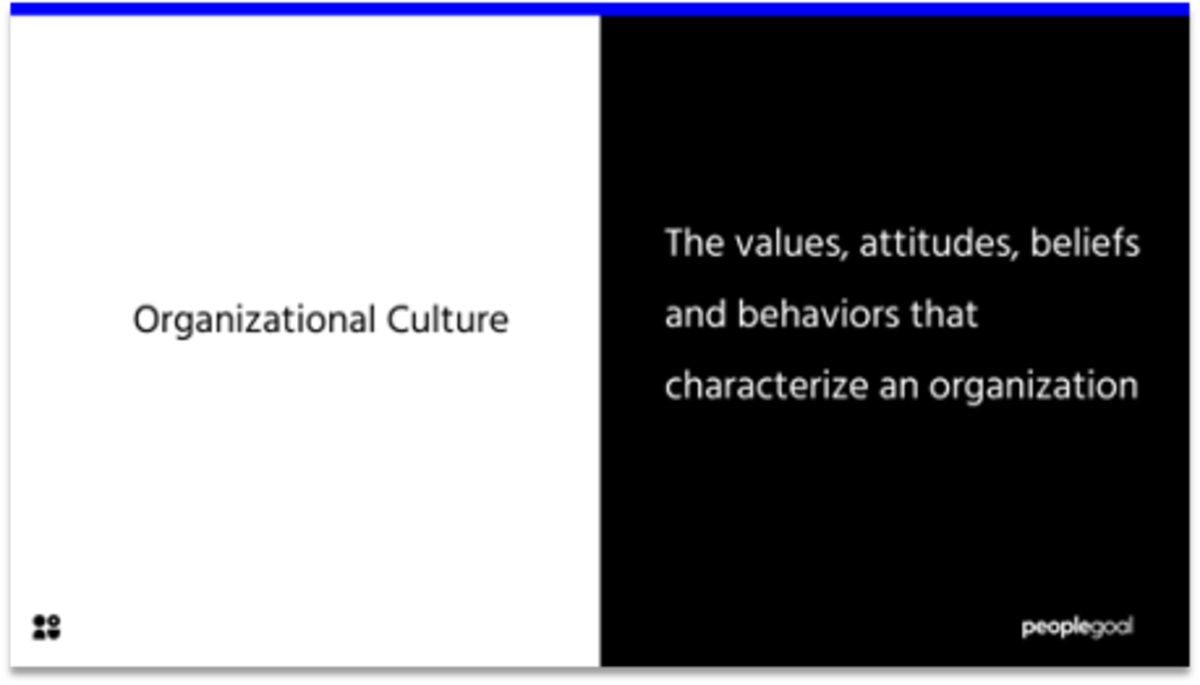When it comes to making a successful team, the steps taken in preparing and executing a development plan are crucial for ensuring that all involved are prosperous and grow as result. By taking the time to properly assess and enact a plan that will fulfill your desired outcomes, you have the best chance of producing more engaged employees, and therefore, a more productive workforce.
Leaders that commit to giving their employees great training and learning opportunities will experience the biggest return on investment. Improving your human capital and finding programs that can help fill existing skill gaps will promote a better employee experience for all involved. In each organization, you are guaranteed to find certain stronger or weaker areas of performance.
The puzzle for every human resource or talent development department is then establishing how to go about filling these skills gaps and encouraging team members to accomplish their career goals. After all, the purpose of a professional development plan is to create a career path that allows for a win-win scenario. For an organization, it is the attainment of business goals, whilst on an individual level, development programs enable team members to progress along their career path leading to evermore engaged employees.
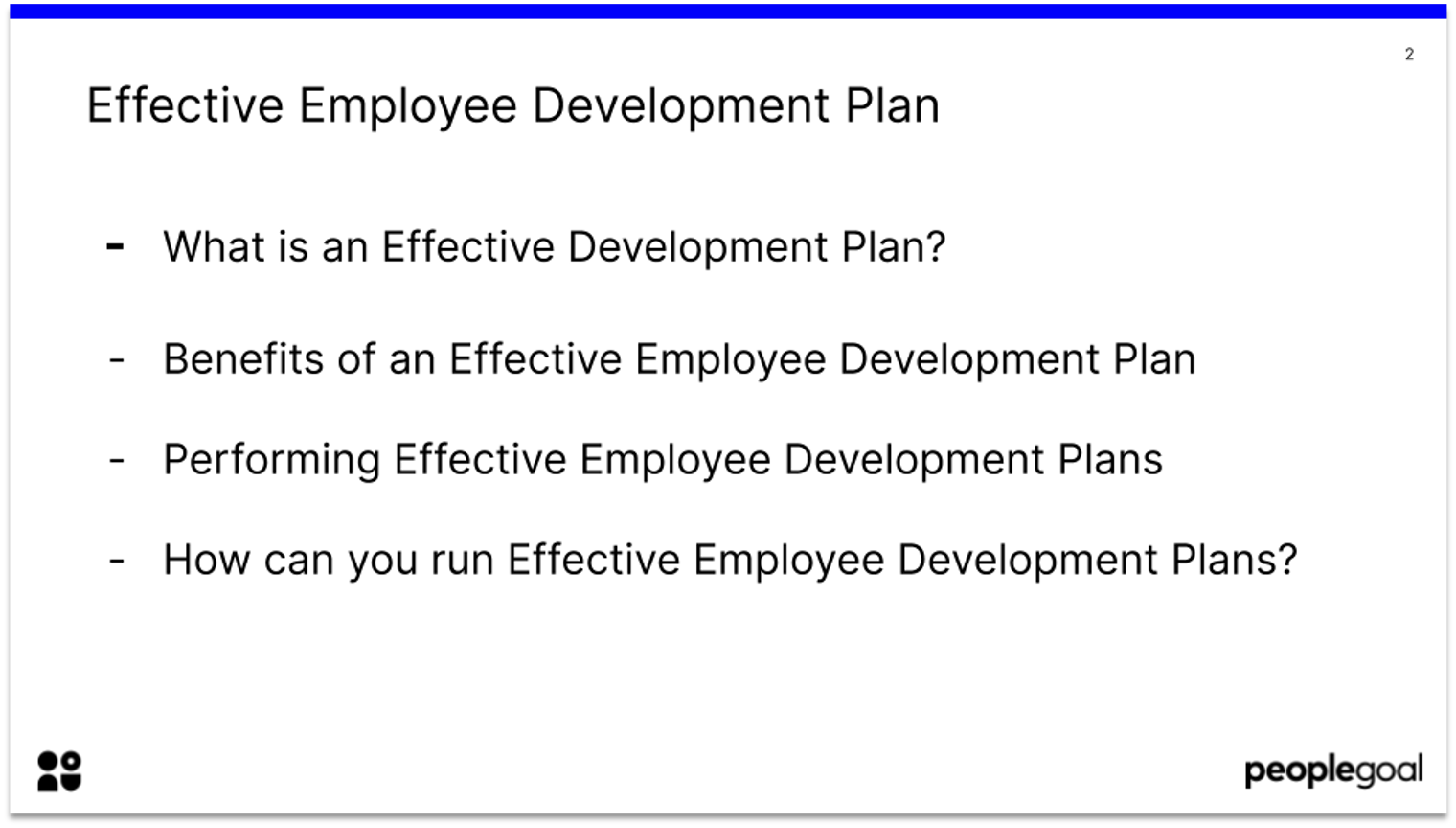
What is an Effective Employee Development Plan?
In a nutshell, an effective employee development plan is a process that promotes individual growth and encourages employees to learn skills for their current role as well as developing an understanding of new roles and responsibilities in their organization.
Creating an employee development plan entails taking some time to understand the needs of your company and that of your employees. There is an increasing interest, particularly from the continuous flow of younger employees that are onboarding to establish opportunities to train and learn on the job. In fact, a study by PayScale found that 72% of young workers are more likely to value opportunities for learning and career advancement. Consequently, organizations that are recognized for great learning prospects when recruiting, onboarding and training new employees will attract better talent.
"A goal without a plan is just a wish" – Antoine de Saint-Exupery
It is important to develop a plan, we find that unless we have considered the desired outcomes of action – we can never be sure if it is truly accomplished. By defining your objectives and setting targets it becomes exponentially easier to not only ensure that long-term goals are met but also to track progress towards completing these goals. With a properly drawn-out action plan, it becomes much more feasible to ensure get employees engaged. Specific employee skills can be assigned and targeted to prompt team members to improve their capabilities in areas relevant to their career goals and other growth opportunities.
Benefits of an Effective Employee Development Plan
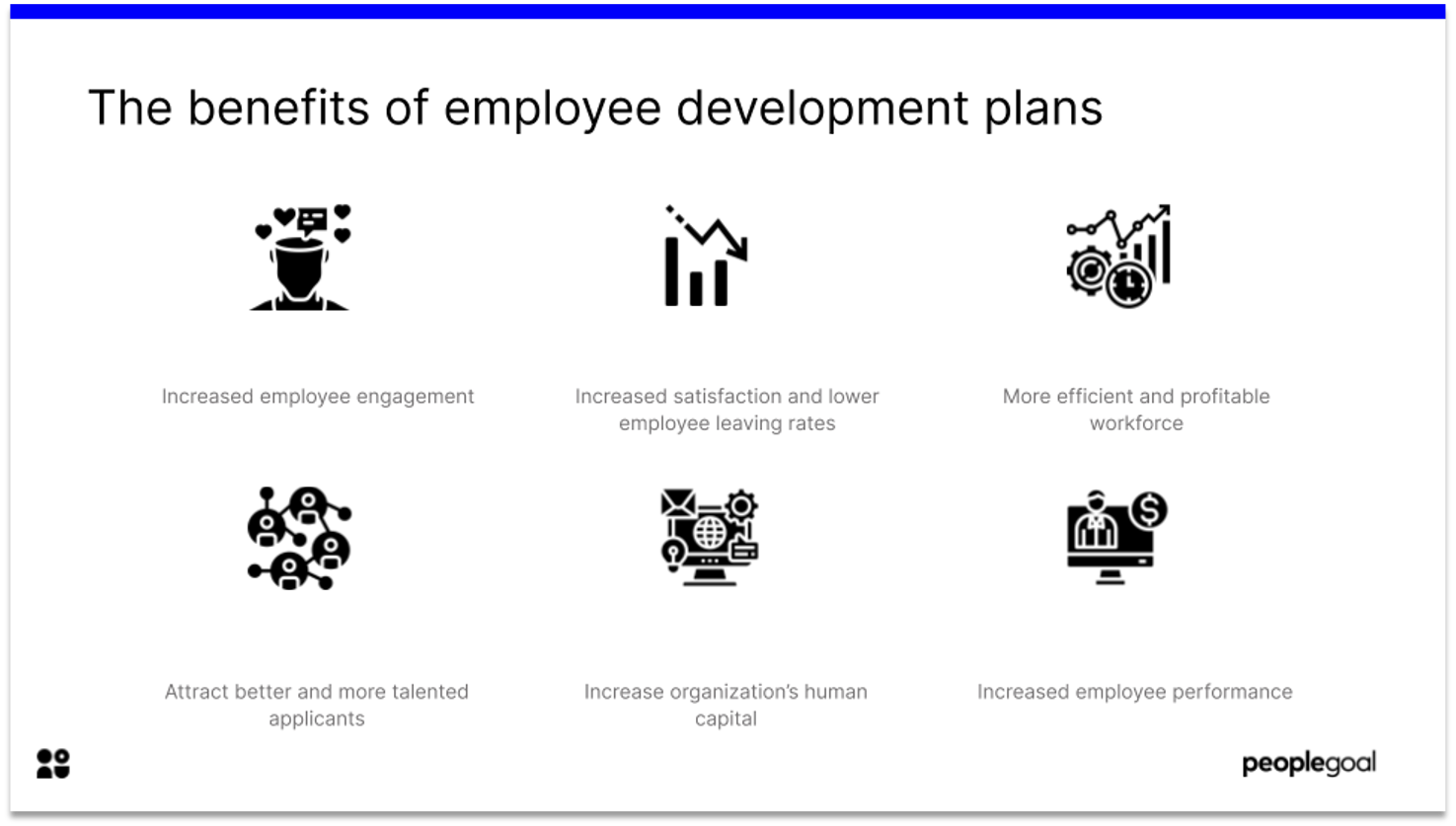
Performing Effective Employee Development Plans
A key factor in executing an employee development plan that is successful is the monitoring and tracking of development. At PeopleGoal we’ve found that in order to fulfill business goals and career goals, there must be a continuous dialogue maintained between leaders and team members. This is why we have created an app in our dedicated app store that will enable users to set up monthly one on one meetings to specifically discuss development.
Within the Career Development One-to-Ones App, any user will be able to schedule a recurring meeting for the purpose of discussing their development opportunities. The power of this app is its ability to automate the process of arranging meetings so that once a month each participant will receive a notification that prompts them to meet – taking away the responsibility from either individual to find the time to talk. Encouraging a regular routine for tracking one’s progression in development will ensure that employees keep to their action plan.
The significance of arranging regular meetings is their capacity to allow for easier monitoring of progress through an employee’s development plan. As and when an individual employee completes any development goals they will be inspired by the greater transparency of meeting these objectives. Furthermore, these training and development goals can be updated as they are achieved. With more regular contact, it also presents better capabilities for assigning new development goals and objectives that comply with the data. Improve employee engagement with succession plans that will clarify the amount of time required to carry out the various training programs.
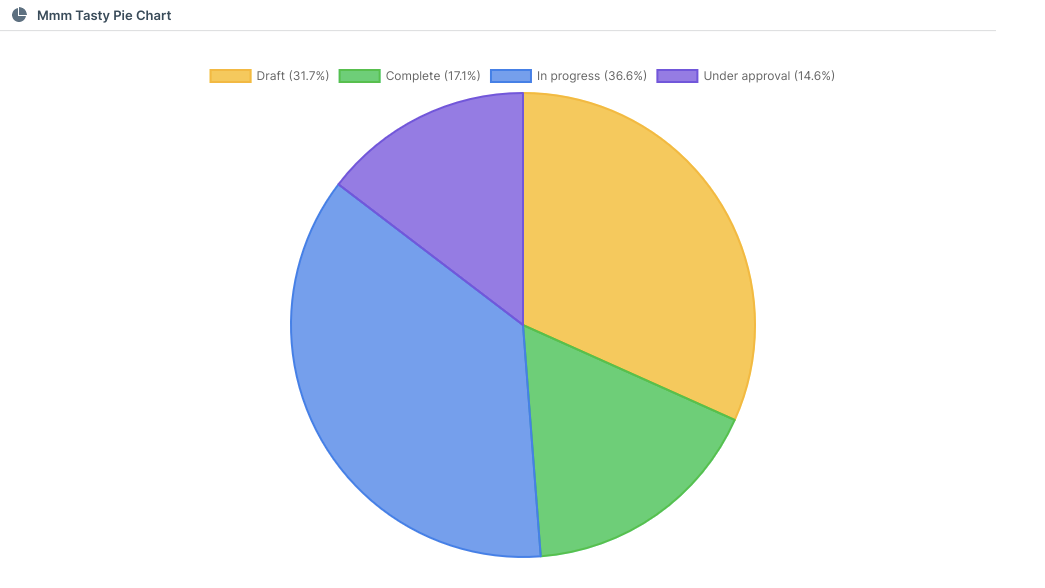
Through an analysis of the employee’s professional development, the data will present greater clarity on the employee’s skillset along with gaps that need more attention. Every single data point in our apps our gathered and can be used in the analysis of data. This means that whatever you want to find out about your workforce can be tracked and visualized using our custom reports and analytics tracking.
How can you run Effective Employee Development Plans?
Now let’s get to the business end of things, below there are 4 key steps that outline how you can run the most effective employe development plans for your organization. Assemble your team members and prepare to shoot off into industry stardom. If you take after these following steps in your own employee development plan templates you are sure to witness significant progress. Both in attaining your business goals and by enabling advances in your employees’ career paths, all in all contributing to a win win scenario for all involved.
1. Start by determining what you’re aiming to accomplish
This is a process of evaluation. Establish what it is that makes your business tick and what you want it to achieve in the long term. By considering the direction of your organization’s development, you can begin to make minor adjustments and prospects for an action plan that will eventually lead to your desired returns. Before you go ahead and develop a plan, you need to determine what your business goals are. With clearly defined development goals, it is far easier to conceptualize and register the steps that need to be taken as well as recognizing when you have achieved your goals.
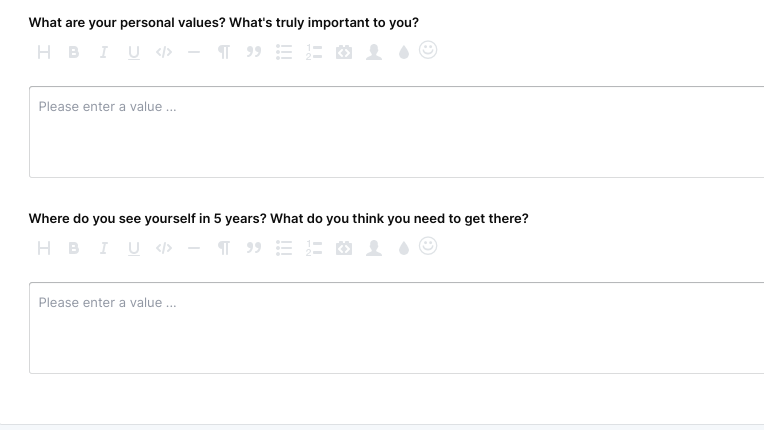
2. Consider your employees
Your organization is the sum of its parts. The most significant of these parts being your employees. As a result, you must take some time to consider your employees and learn about their skill sets and skill gaps. You should also listen to their desires and intentions for their own career paths. With this information, you will be better equipped to assign professional development plans that benefit both the employee and the company. Creating a career development plan that aligns with their intentions will motivate staff. Motivated employees are more likely to fulfill the requirements and as such their growth will lead to organizational development.
3. Find the most suitable opportunities
Now that you understand more about your business goals and the career goals of your employees, you can begin to construct an action plan that aligns with all of these requirements. Establish how you can get the most from your employees. Ask about the style of training and development programs that would best suit them.
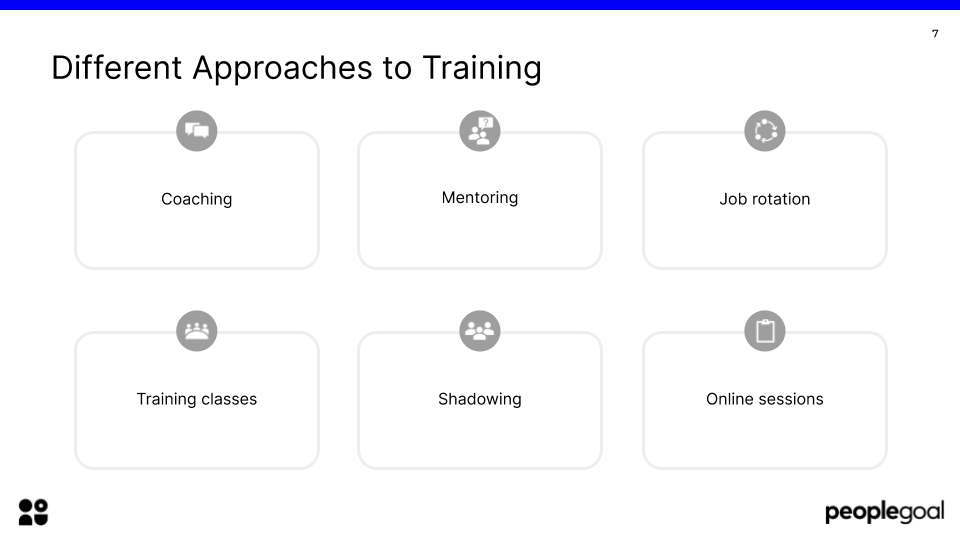
There are a whole host of options for your employees to embark on their career paths for training and development. You may have time restrictions or other conditions to factor in. All of this must be considered and incorporated in your company’s efforts to find the most suitable opportunities when creating an employee development plan.
4. Monitor your progress and develop as you go
Last but by no means least important. The fourth and final step in running an effective employee development plan is to learn as you go. Taking notes on improvements and translating it to further training is the best way to develop complete and fully equipped employees. This process is facilitated in PeopleGoal’s very own Development workspace. Through the 1 on 1 Development app, you are able to record notes from discussions between team members and use these to inspire the resultant professional development goals for the employee’s continued progression.
Employees engaged in regular conversation about their development are more likely to reach their targets and resultantly progress in their career path – fulfilling their career goals. The process of creating professional development plans is an ongoing and ever-evolving phenomenon. It’s important to know this as there must always be a contingency for further development once predetermined goals have been met.
Ready to 3x Your Teams' Performance?
Use the best performance management software to align goals, track progress, and boost employee engagement.
